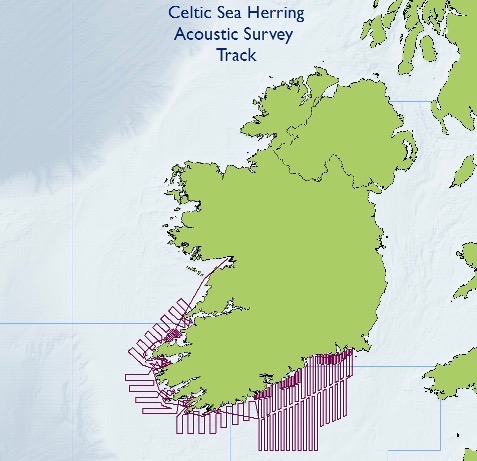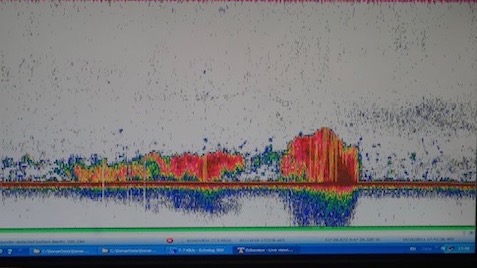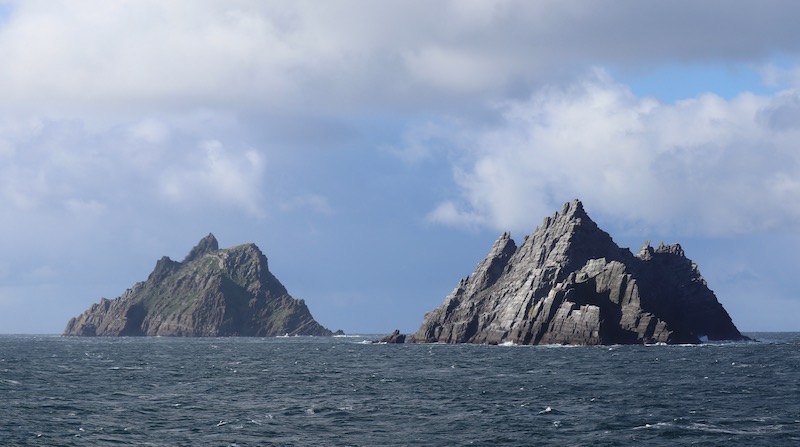5/5 would recommend
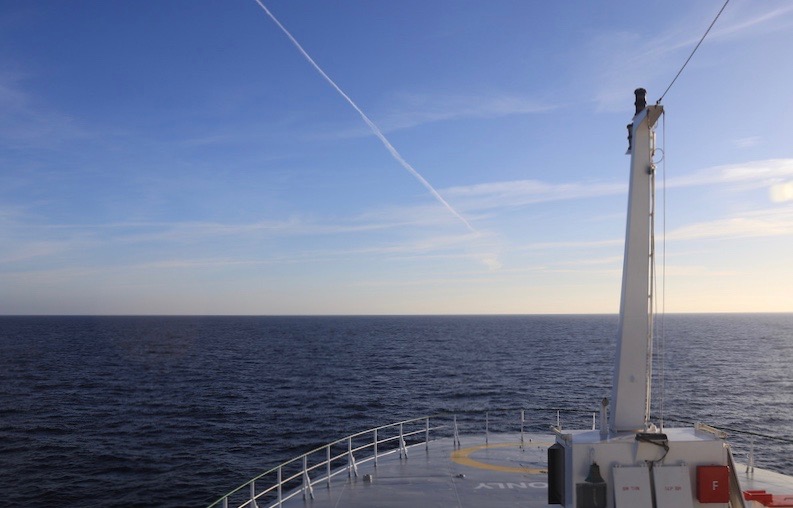
What a view! We had such incredible weather for most of the trip.
When I say I’m heading on a research cruise, some landlubbers assume that I’m headed off on a luxury tour of the Irish coast with cocktails at 5pm in the sunset deck. Now…. that’s not exactly true. For one, the Irish research vessels are dry, so it’s more likely to be a cup of tea and a packet of Tayto, and, despite having the word “cruise” in the description, we are on board to do some work.
Sometimes it can feel like a vacation, however! I recently came back from a ten-day trip on the RV Celtic Explorer, the larger of the two vessels operated by the Irish Marine Institute. Back in April, I was part of a survey on the Celtic Voyager. This time, I was part of the scientific team for the Celtic Sea Herring Acoustic Survey, one of a few acoustic surveys conducted by the Marine Institute to track pelagic fish population size and location. The Celtic Sea Herring survey is timed to coincide with the wintertime spawning population before they move inshore to spawn.
Acoustic surveys work by running over set transects with the ship (see below), searching for signals on the acoustic equipment that could represent a school of herring or other fish. When such a “mark” is located (see below), the ship deploys a trawl to take a sample of the suspected school to determine its composition.
That’s where I came in. I was on the Fish Team, responsible for collecting the biological data. We would sort and measure the fish, taking lengths and weights from a representative sample of all species present. We would determine the sex and reproductive maturity of the herring and take their otoliths, small bones in the inner ear of fish. The otoliths grow predictably throughout the year (often less in the winter than the summer), so the number and thickness of the rings in the otolith can be used to age the fish, much like tree rings.
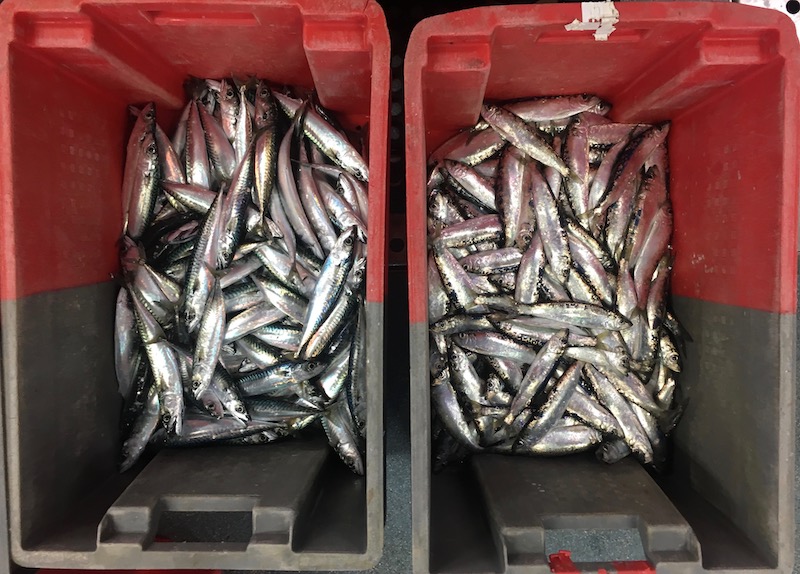
Sorted mackerel (left) and herring (right). And these were some of the easier ones to tell apart!
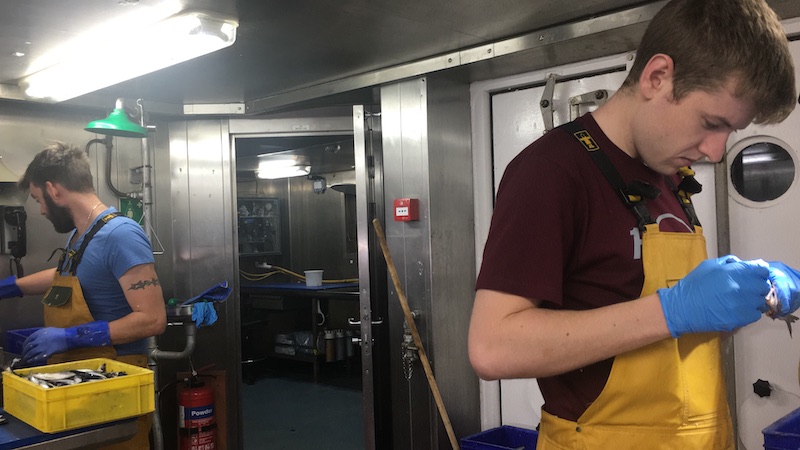
Life in the wet lab! Karl in the background weighing fish, with Ian in the foreground expertly removing an otolith.
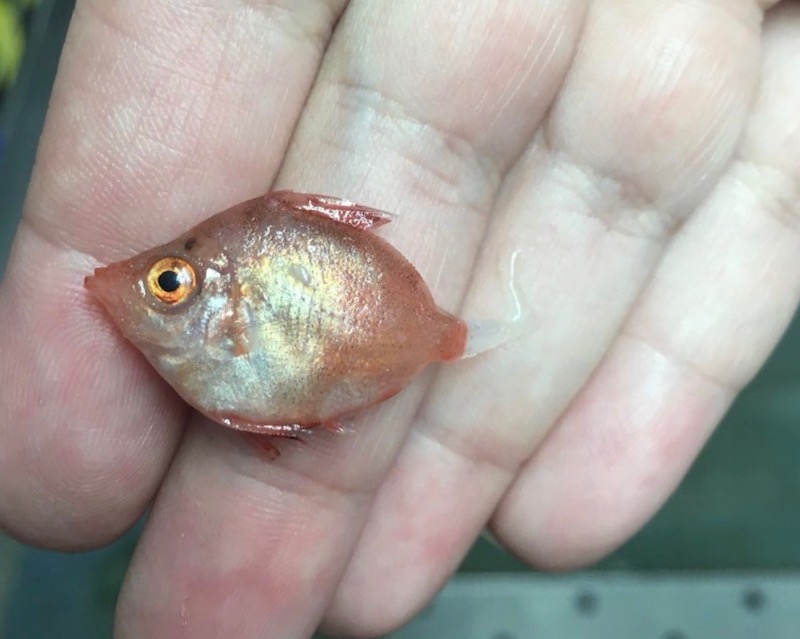
Itty bitty juvenile boarfish from one of our hauls! Cute, but they can prick you with their little spines.
Unfortunately, given how much fun it is to be elbow-deep in fish slime (I kid, I liked the work), we didn’t do too many trawls. This isn’t a particularly busy survey in any year, but whether because of cyclical changes in stock location and levels, habitat shifts with climate change, an increase in predatory cetaceans and tuna in the area, or fishing pressure, we didn’t find many fish shoals, let alone herring. If you’re interested in the findings from previous studies and possible reasons for the low herring abundance, you can check out the 2017 report.
In addition to the acoustic and fish teams, there were also marine mammal and seabird observers on board. While the fish team worked for approximately 2-4 hours a day, the observers worked throughout all daylight hours, “keeping a close watch upon the fine line between the blue of the sky and the green of the sea”, recording their sightings. The calm weather was especially lucky for spotting wildlife. Along with fin whales, loads of common dolphins, a humpback whale (!), and many species of seabirds, we saw tuna breaching as they hunt, a first for me!
Aside from all of the important science, the cruise was just a blast. We had perfect weather for the most part, with bright sun and flat seas. Most importantly, everyone on board was sound as can be. We watched much tv (Forged in Fire was the clear favourite), had many important conversations about how to properly pronounce “scone”. Learned some new…eh…colourful songs. I had the time of my life and will be begging to go on another cruise soon, even if it’s a bit more strenuous!

